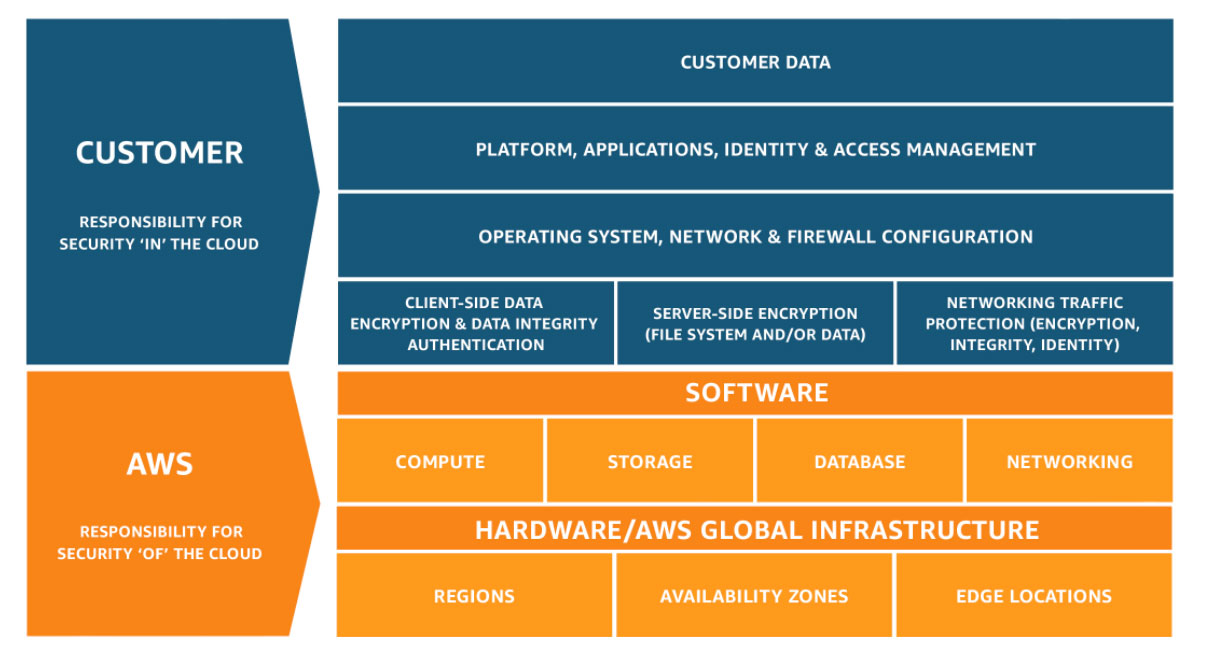Topic 1: Core Principles of Cloud Security
Table of Contents
Overview
When diving into cloud security, the core principles are what set the foundation for a robust and resilient system. This section isn't about fancy buzzwords—it's about the fundamental concepts that protect your cloud environment day in and day out. And everyone should know these whether you are the cloud security engineer or a developer somewhere else on the team. Security is everyone's responsibility.
Learning Objectives
- Understand the CIA Triad and its application in cloud environments
- Master the Shared Responsibility Model across different cloud providers
- Apply Defense in Depth strategies to cloud resources
- Implement the Principle of Least Privilege in cloud systems
Getting Started as a Junior Engineer
As you begin your cloud security journey, remember these key points:
- Start with the shared responsibility model – Understand what your cloud provider handles vs. what's your responsibility
- Learn how CIA principles apply to cloud – See how these classic security concepts work in modern environments
- Focus on core services first – Master security for compute, storage, network, and identity services
- Use provider tools and documentation – AWS Security Hub, Azure Security Center, and GCP Security Command Center are your friends
Security Foundations
Confidentiality, Integrity, and Availability (CIA Triad)
At the heart of any security strategy is the CIA Triad.
- Confidentiality ensures that sensitive information is accessible only to those who have explicit permission.
- Integrity guarantees that data remains accurate and unaltered during storage and transit.
- Availability makes sure that systems and data are accessible when needed, without unnecessary delays or downtime.
Shared Responsibility Model
This model defines what security tasks you handle versus what your cloud provider manages:
-
Cloud Provider Responsibility:
- Physical security of data centers
- Network infrastructure
- Hypervisor security
- Service availability
-
Customer Responsibility:
- Data security and encryption
- Identity and access management
- Network traffic protection
- Operating system security
- Application security
Shared Responsibility Model for AWS (Example)

Principle of Least Privilege
This principle is straightforward: give users and systems only the permissions they absolutely need. By limiting access, you reduce the potential avenues for an attacker to exploit, keeping your environment lean and secure.
Implementation tips:
- Start with zero permissions and add only what's needed
- Use role-based access control (RBAC)
- Regularly review and audit permissions
- Remove unnecessary access immediately when no longer needed
Defense in Depth
Relying on a single security measure is a recipe for disaster. Instead, defense in depth means layering multiple security controls across your environment. If one layer is breached, the next one steps in to protect your assets. This multi-layered approach significantly increases your overall security posture.
Differences from Traditional Security
Dynamic Scaling and Elasticity
Cloud environments are built for scale—resources can be spun up or down on-demand. This fluidity means that your security measures need to be as agile as your infrastructure. Traditional static security models fall short when the underlying resources are constantly changing.
On-Demand Resource Provisioning and Its Security Implications
In the cloud, resources are provisioned on the fly. While this offers tremendous flexibility and cost benefits, it also introduces new challenges. Security controls must be automated, consistently applied, and adaptable to a rapidly evolving environment. Manual security checks simply can't keep up with the pace of change in a cloud setup.
Balancing Abstraction with Fundamental Knowledge
Cloud services abstract away many technical details, which can be both helpful and risky for security:
| Layer of Abstraction | What's Hidden | Security Implications | How to Build Understanding |
|---|---|---|---|
| Infrastructure (IaaS) | Physical hardware, network devices | Limited visibility into hardware vulnerabilities | Set up a home lab with physical switches/routers |
| Platform (PaaS) | OS, runtime, middleware | Less control over underlying platform security | Practice with local VMs and containerization |
| Software (SaaS) | Application logic, data storage | Reliance on provider's security controls | Create your own web applications with security controls |
Practical tip: For each cloud service you use, try to understand its physical counterpart. For example, when using an AWS Security Group, understand how it relates to traditional firewall rules you might set up in a home network.
Hands-on Practice
Test Your Knowledge
Test your knowledge with an AI assistant. Here are some example prompts to test your understanding of cloud security fundamentals:
- Can you explain the CIA triad and why it's important in cloud security?
- How does the shared responsibility model work in AWS, Azure, and GCP? What are the key differences?
- Why is defense in depth particularly important in cloud environments?
- How would you implement the principle of least privilege in a cloud environment?
- What are the key differences between traditional security and cloud security approaches?
Practical Exercise for Beginners
Set Up Basic Security Controls
- AWS: Enable CloudTrail, configure S3 bucket policies, and set up Security Groups
- Azure: Configure Azure Security Center, set up Network Security Groups, and enable Azure Monitor
- GCP: Enable Cloud Audit Logs, set up firewall rules, and configure VPC Service Controls
Labs and Resources
Labs
| Vendor | Topic | Link |
|---|---|---|
| AWS | AWS Well-Architected Security Workshop | https://catalog.workshops.aws/well-architected-security/ |
| AWS | Introduction to AWS Security | https://www.youtube.com/watch?v=QMBkq6MrT2w |
| AWS | AWS Security Primer | https://exploraws.com/courses/aws-security-primer |
| Azure | Microsoft Security Best Practices | https://learn.microsoft.com/en-us/azure/security/fundamentals/best-practices-and-patterns |
| GCP | Security Blueprint | https://cloud.google.com/architecture/security-foundations |
| GCP | GCP Security Best Practices | https://cloud.google.com/docs/enterprise/best-practices-for-enterprise-organizations/security |
| GCP | Cloud Security Command Center Walkthrough | https://cloud.google.com/security-command-center/docs/quickstart-security-command-center |